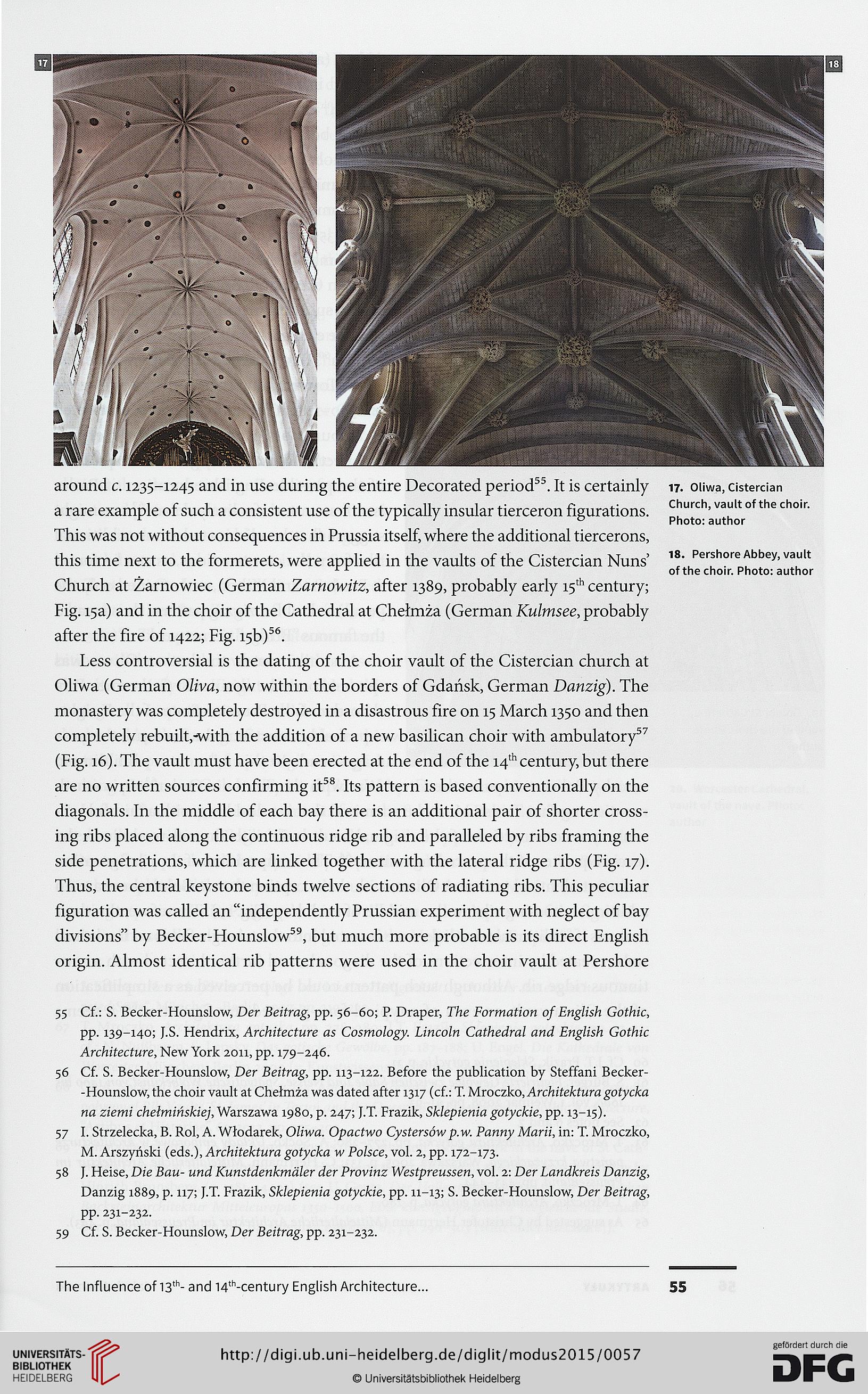around c. 1235-1245 and in use during the entire Decorated period^. It is certainly
a rare example of such a consistent use of the typically insular tierceron figurations.
This was not without consequences in Prussia itself, where the additional tiercerons,
this time next to the formerets, were applied in the vaults of the Cistercian Nuns
Church at Żarnowiec (German Znrnowtfz, after 1389, probably early 15^ century;
Fig. 15a) and in the choir of the Cathedral at Chełmża (German Mdwsec, probably
after the fire of 1422; Fig. i5b)^.
Less controversial is the dating of the choir vault of the Cistercian church at
Oliwa (German O^vtt, now within the borders of Gdansk, German Danzig). The
monastery was completely destroyed in a disastrous fire on 15 March 1350 and then
completely rebuilt,with the addition of a new basilican choir with ambulatory^
(Fig. 16). The vault must have been erected at the end of the 14^ century, but there
are no written sources confirming iGT Its pattern is based conventionally on the
diagonals. In the middle of each bay there is an additional pair of shorter cross-
ing ribs placed along the continuous ridge rib and paralleled by ribs framing the
side penetrations, which are linked together with the lateral ridge ribs (Fig. 17).
Thus, the central keystone binds twelve sections of radiating ribs. This peculiar
figuration was called an "independently Prussian experiment with neglect of bay
divisions" by Becker-Hounslow^, but much more probable is its direct English
origin. Almost identical rib patterns were used in the choir vault at Pershore
17. Oliwa, Cistercian
Church, vautt of the choir.
Photo:author
18. Pershore Abbey, vautt
of the choir. Photo: author
55 Cf.: S. Becker-Hounslow, Der Beitrag, pp. 56-60; P. Draper, Phe formation of English Gothic,
pp. 139-140; I.S. Hendrix, Architecture as Cosmology. Lincoln Cathedral and English Gothic
Architecture, New York 2011, pp. 179-246.
56 Cf. S. Becker-Hounsiow, Der Beitrag, pp. 113-122. Before the publication by Steffani Becker-
-Hounslow, the choir vault at Chełmża was dated after 1317 (cf.: T. Mroczko, Architektura gotycka
na ziemi chełmińskie;, Warszawa 1980, p. 247; I.T. Frazik, Sklepienia gotyckie, pp. 13-15).
57 I. Strzelecka, B. Roi, A. Włodarek, Oliwa. Opactwo Cystersów p. w. Panny Marii, in: T. Mroczko,
M. Arszyński (eds.), Architektura gotycka w Polsce, vol. 2, pp. 172-173.
58 I. Heise, Die Bau- and Kanstdeakmaier der Provinz Westpreussen, vol. 2: Der Landkreis Danzig,
Danzig 1889, p. 117; J.T. Frazik, Sklepienia gotyckie, pp. 11-13; S. Becker-Hounslow, Der Beitrag,
pp. 231-232.
59 Cf. S. Becker-Hounslow, Der Beitrag, pp. 231-232.
The Influence of 13^- and 14^-century English Architecture...
55





